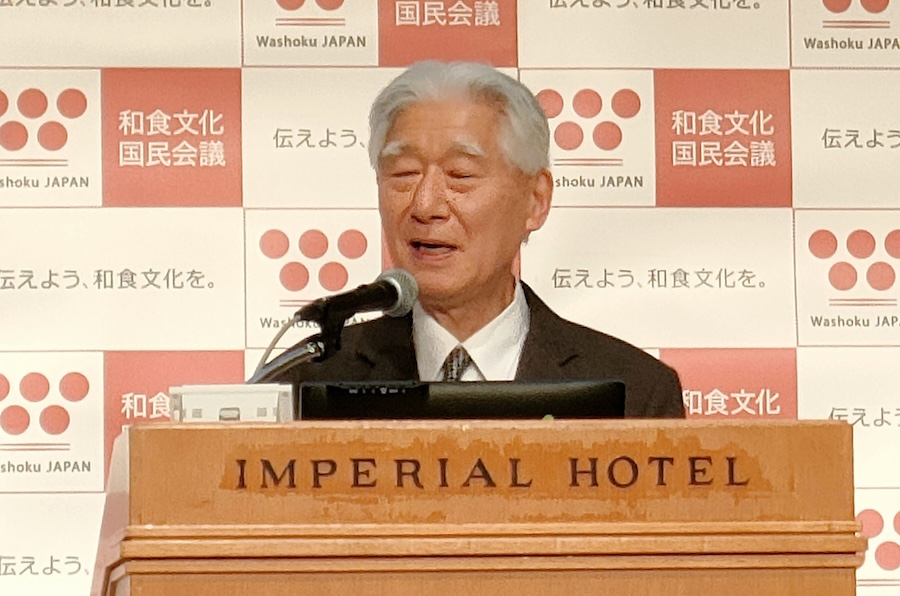
A typical traditional Washoku meal: rice, miso soup, mackerel (salted, dried and grilled), spinach with tofu dressing, tamagoyaki rolled omelette, and simmered hijiki seaweed and soybeans. (©Fumie Oyama)
Read the full story on Japan 2 Earth - Washoku: Can Japanese Cuisine Be Made Even Healthier for Future Generations?
On December 4, 2023, a symposium commemorated 10 years to the day since Washoku was registered with UNESCO as an intangible cultural heritage. Then in March 2024, an event was held in London, also to celebrate the 10th anniversary. It focused on dashi (Japanese soup stock), which forms the basis of Washoku cuisine. The events explored ways to ensure Washoku is passed on to future generations.
What's Changed after UNESCO Registration?
"Washoku's registration with UNESCO made a significant impact, which had major impacts socially as well."
So reflected Isao Kumakura, Director of the Miho Museum, who played a crucial role in the UNESCO registration. Kumakura spoke at the "Connecting Washoku to the Next Generation" meeting at the Imperial Hotel Tokyo.

Since the registration, leading figures have been selected as Persons of Cultural Merits for their contributions to Washoku. These include Yuzaburo Mogi, Honorary CEO of leading soy sauce producer Kikkoman, and Yoshihiro Murata, third-generation head chef and owner at Kikunoi, a long-established Japanese restaurant in Kyoto.
Continue reading the full story on Japan 2 Earth to learn more about an initiative by a renowned chef to improve the taste of Japanese cuisine with umami.
And find more great articles on the environment and the challenges of achieving the SDGs on our affiliated website Japan 2 Earth (J2E), sparking a transition to a sustainable future.
RELATED:
- Strategic Initiative on Sustainable Food Tackles Japan's High Salt Intake
- Asian Young Dietitian Network Launches in Japan
(Read the article in Japanese.)
Author: Mika Sugiura








